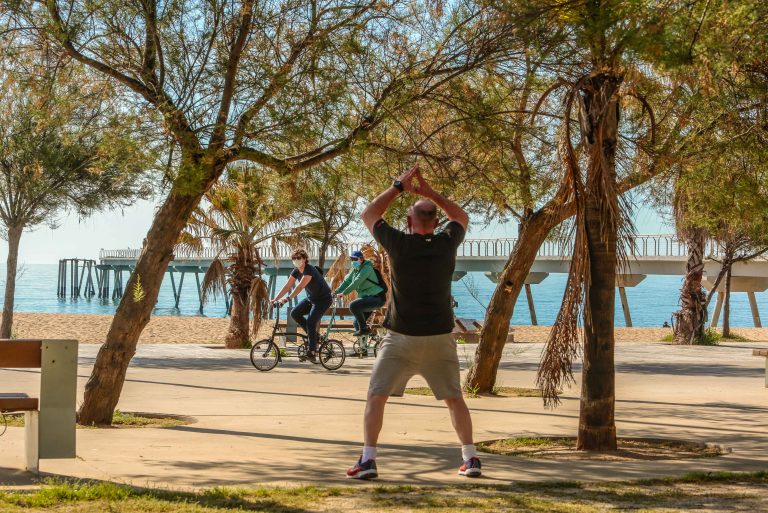In the Experimental Gerontology journal on Jan. 25, 2022, 15 studies about exercise programs in older adults were published. Twelve reported cost-effective results. The paper was authored by researchers from multiple universities and departments in Spain.
The report concluded that one of the most cost-effective routines was a multicomponent training program. It consisted of 60-minute aerobic, strengthening, balance, and stretching exercise sessions at least twice per week conducted in a group, with extra exercises at home.
Healthy aging
Global life expectancy has doubled since 1900, and the elderly population is rapidly growing. The number of adults aged 60 years and older has increased 2.5 times from 380 million in 1980 to over one billion people in 2020, 13.5 percent of the global population.
According to the World Health Organization (WHO), this percentage will increase to 22 percent, or 2.1 billion people by 2050. By then, two-thirds of adults over 60 years are expected to live in low- and middle-income countries.
The “accumulation of a wide variety of molecular and cellular damage over time” results in the decline in physical and mental capabilities and an increased risk of disease. Common conditions in the elderly include “hearing loss, cataracts and refractive errors, back and neck pain and osteoarthritis, chronic obstructive pulmonary disease, diabetes, depression and dementia.” The geriatric population is also more likely to have multiple conditions.
Success
You are now signed up for our newsletter
Success
Check your email to complete sign up
However, these changes are not uniformly seen in older adults. Healthy aging, although partially genetic, is promoted by a variety of factors such as physical and social environments, sex, ethnicity, and socioeconomic status. Some of the most significant modifiable risk factors are physical activity, smoking, and alcohol use.
Physical activity offers a plethora of health benefits, including a reduced risk of heart disease, diabetes, dementia, Alzheimer’s, and all-cause mortality. Keeping active also promotes the ability to function independently during older age and to maintain high cognitive performance.
Cost-effective exercises
The Spanish researchers studied 2,053 relevant articles and chose to review 15 articles that met selection criteria based on quality assessments. A meta-analysis was not conducted because of the heterogeneity of the studies due to the various types of exercise interventions, differences in international thresholds for “when an intervention achieves efficiency,” and participant characteristics.
The final 15 studies came from Australia, the U.S., New Zealand, the United Kingdom, Canada, and Finland. All except two studies followed up with patients for at least 12 months; the sample sizes ranged from 122 to 6,420 participants.
Exercise interventions were conducted in exercise centers (n = 4 studies), at home (n = 8), or both (n = 3). Seven interventions lasted for 60 minutes per session; 14 required over two training sessions per week.
The type of exercise was variable: a multicomponent training (MCT) program was in seven studies; strength and balance exercises were in five studies; strength training only was in two studies; and a mix of cardiovascular, strengthening, balance, and flexibility exercises were in one study.
MCT programs “included a combination of aerobic, strength, power, gait, balance and functional training programmes, and/or flexibility, and/or coordination training, and it should include gradual increases in the volume, intensity, and complexity of the individual exercises.”
One of the main outcomes of the study was the ability of exercise interventions to increase the number of quality-adjusted life years (QALYs), which takes into account the quantity and quality of life. A higher average of QALYs and better cost-utility was obtained through MCT programs specifically focused on strength exercises mainly in the lower extremities, with at least two 60-minute training sessions per week for at least six months, performed in an exercise center and in groups.
The level of exercise intensity was not analyzed in detail because of the lack of reporting from the majority of studies and the lack of detail about how intensity was controlled. Nevertheless, the authors recommended “progressive moderate or vigorous intensity” MCT programs.
Additional benefits can be obtained from performing extra exercises at home with home-based follow-up, allowing for cost savings. Balance exercises three or more days each week are especially important for older adults, who are more prone to falls and associated fractures.
Variables that modified the cost-effectiveness of activities included “sex, age, cognitive status, frailty, and frequency and duration of training,” which can inform future studies, public policies, and medical decisionmaking. The cost-effectiveness of exercise interventions in older adults was found to be higher than usual care, “requiring between US$13,000 and US$50,000 per QALY, whereas some health interventions require double or triple the initial investment.”













